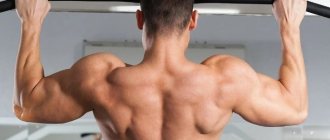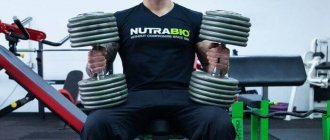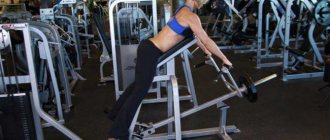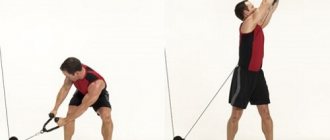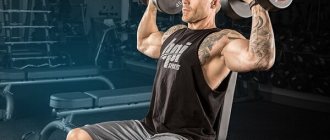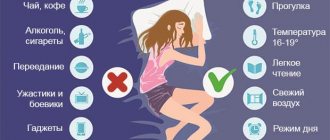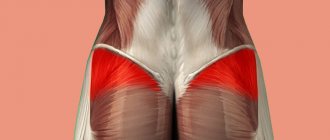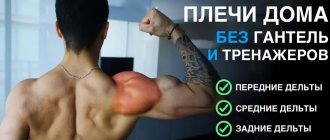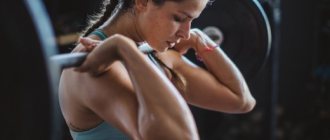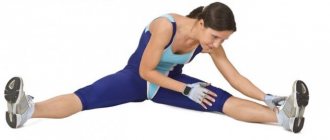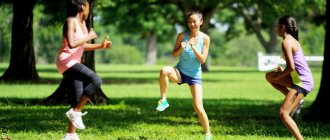2016 NSCA Trainer of the Year Nick Tumminello talks, provides scientific references (and shows in a series of videos) how to properly strengthen your upper body muscles.
Many coaches and trainees work the upper body with only four basic movements:
- horizontal press
- horizontal thrust
- vertical press
- vertical traction.
These are, of course, important movement patterns, but, as I wrote in a previous article, the basics are not enough: for maximum strength and injury prevention, you also need to include unilateral and cross-over exercises in the program.
Today we’ll talk in more detail about how to strengthen the weak links remaining after traditional strength exercises for the upper body.
Reduction of arms on blocks or in a simulator (“butterfly”)
Horizontal presses (bench press, push-ups, etc.) work the pectoral muscles in a stretched position, but at the top point the load (due to its gravitational nature) on the pectoral muscles is minimal. That’s why it’s worth adding hand pinch on blocks or in the butterfly machine (in the video it’s done with one hand, but usually they work with two at the same time):
At the end point of this movement, the load on the pecs is maximum; This is how isolation makes up for the lack of “basic” presses. The option with block simulators allows you to go even further - cross your arms, increasing the useful amplitude.
Frontal and lateral dumbbell raises
The front lift of dumbbells is carried out as follows: the athlete stands straight, legs are shoulder-width apart, and dumbbells are in his hands. Then, he alternately begins to lift dumbbells with straight arms in front of him. You should raise your arms to shoulder level; at the highest point you need to hold the projectile for 5 seconds.
The lateral lift of dumbbells is carried out from a starting position similar to the previous exercise, only in this case the arms are raised on the sides of the body to shoulder level.
Note that both frontal and lateral dumbbell raises can be performed with both hands at the same time, however, for beginners it is recommended to start practicing these exercises using hands alternately.
These upper body exercises effectively work the shoulders and upper back.
Face Pulls, Raises, and Rear Delt Rows
Most horizontal rows (barbell rows, one-arm dumbbell rows, abdominal rows or machine rows) extend the shoulder in the sagittal plane, but as you already know, the shoulder joint is capable of more. To improve his health and training variety, include movements in your program that work on abduction in the horizontal plane:
Face pull:
Raising arms (this is a photo, but if you click on it, the video will open, and if not, here is the link):
Horizontal row with elbows out to the sides:
The first option (pull to the face) is the best, as it also adds a rare external rotation (more on this later).
Exercises to strengthen the muscles of the upper body
Stretching a rubber band while kneeling
Why: To strengthen the trapezius muscle
How to do it : Get down on the knee of your left leg, place your right leg on your foot, the angle at the knee of your right leg should be 90 degrees. Hold one end of the rubber band with your left hand, with your arm down. Grasp the other end of the tourniquet with your right hand and raise your right arm to a vertical position, stretching the tourniquet. Return your right hand down. While performing the exercise, tense your abdominal and back muscles; Make sure your pelvis is positioned above the knee of your left leg.
Perform 20-25 repetitions on each side.
Raising arms with an elastic band
Why: To strengthen the muscles of the shoulders, trapezius muscle, rhomboid back muscle.
How to do it : Grasp the rubber band with an underhand grip, keeping your elbows close to your body and your arms bent at 90 degrees. Tighten your abdominal muscles and begin to spread your forearms and hands, stretching the tourniquet. Bring your shoulder blades together and avoid arching your lower back. The elbows remain pressed to the body. Extend your arms until your forearms form a straight line, then return them to the starting position and repeat the movement.
Perform 20-25 repetitions.
Pulling the elastic band
Why: To strengthen the trapezius, rhomboid and latissimus dorsi muscles.
How to do it : Attach a rubber expander to a pole or car door, and grasp the ends of the band with your hands. Take a step back so that the resistance band stretches slightly. Keep your abdominal muscles tense and your knees relaxed and soft. Squeeze your shoulder blades together and pull the tourniquet towards you with both hands. Slowly straighten your arms, returning to the starting position, repeat the movements.
Complete 30 reps.
About the Author: Jon-Erik Kawamoto is a former professional runner and strength coach with 15 years of experience. He is the co-founder of JKConditioning (Canada), specializing in health and fitness services.
Original article
Translation - Olga Polyakova
Subscribe to our Telegram channel (@strela_coach) and read new articles!
Recommendations for you:
5 types of exercises to improve your running technique
Move your elbows back to run faster
Body position while running - why is it important?
Core workout
How to do a plank correctly
Feet: take care of them and strengthen them
Abduction of the arm with a dumbbell while lying down or with a block while standing
The exercises from the previous paragraph perfectly load the rear deltoids in a shortened position (when the shoulder parts of the arms are moved to the sides), but not enough in an extended position (when the arm is in front of the body).
To work this part of the range, add a dumbbell abduction:
Or with a standing block:
By combining exercises from both sections and strengthening your muscles throughout the entire range of motion, you will develop what I call “full range of motion strength.”
Some tips
Exercises for losing weight in the upper body and for developing muscle mass, which are given above, must be performed taking into account the following recommendations:
- before starting any activity, you should thoroughly warm up all the muscles of the body, setting aside 10-15 minutes for this;
- Exercises should be performed using the correct technique;
- special attention should be paid to rest between series of exercises, it should be about 2-3 minutes;
- If you have any questions regarding training, it is recommended to contact your instructor or coach;
- the training program should be planned taking into account the increase in additional weights, while the number of repetitions of a particular exercise should be reduced;
- any exercises should be performed quickly during the first phase, and smoothly during the final phase.
Outward rotation
Almost all pressing exercises (and some pulling exercises) target the shoulder internal rotator muscles; For balance and health, you need to add external rotation. But even if trainees include this movement in the program, they choose the wrong option.
Smoker outward rotation:
In essence, this is a static biceps curl, to which for some reason a turn is added. The main load (from the same gravity) does not fall on the rotators at all.
External rotation of a healthy person:
To strengthen the muscles that rotate the shoulder, you need resistance in the horizontal plane. It can be provided with a block (when performed standing) or a dumbbell (lying).
By the way, for ultra-basic trainers who consider such isolation a waste of time, it is useful to read research (9) - it provides sufficient load to the supraspinatus and infraspinatus muscles (part of the rotator cuff complex).
Types of shoulder injuries
Various types of injuries occur during strength training. Lavallee and Tucker (30) suggest dividing strength training injuries into acute non-visible (muscle or tendon tears), acute manifest (fractures, dislocations and tendon ruptures), and chronic (tendopathies, stress fractures). According to the literature, 46–60% of all acute injuries in strength training are muscle and tendon tears (5, 22). Various types of shoulder injuries are also seen with weight training. The prevalence and type of damage in strength training usually depends on the choice of exercises and loads used in different strength training programs (30). Table 1 summarizes some of the most common strength training shoulder injuries reported in the literature.
Table 1. Common shoulder injuries associated with strength training (2–4.6, 8, 10, 13, 14, 16, 25, 31, 33, 38, 41, 42, 44, 47)
| Type of injury | Suspected pathology | Exercises Commonly Associated with Injury |
| Osteolysis of the distal clavicle (weightlifter's shoulder) (27) | Bone destruction in the distal part of the clavicle, widening of the joint space of the acromioclavicular joint, subchondral stress fracture (5,43,44) |
|
| Soft tissue injuries to the rotator cuff (mainly the supraspinatus muscle) and the long head of the biceps brachii muscle at the proximal attachment, including bursitis, tears and shoulder impingement (10,15,35,40,51) | Repetitive microtrauma to tissue from lifting the arm or holding the arms overhead (8) |
|
| Peripheral nerve injuries: subscapular, long thoracic and medial thoracic neuropathy (2,3,33, 47) | Overtraining, poor technique, direct trauma, muscle hypertrophy, and end-joint sprain injuries (33) |
|
| Anterior shoulder instability, capsule insufficiency, or shoulder dislocation (12, 16, 18) | A position in which the humerus is posterior to the body or there is simultaneous abduction and external rotation of the shoulder (40) |
|
How to train and what to pay attention to
- The most important thing for strengthening the corset, that is, the correct position of the spine, is to uniformly strengthen the antagonist muscles, for example, the back and chest. The number of exercises for each group should also be the same, otherwise an imbalance in tone may occur.
- It is also important to strengthen the shoulder joints and their stabilizers, this is also facilitated by vertical presses and exercises for the deltoid muscles. One exercise is enough. There is no need to train individual deltoids unless you are preparing for a bodybuilding competition.
- But it is not necessary to train your arms - biceps and triceps with separate exercises. They already work in basic exercises for the chest and back. Only if there is an aesthetic need to strengthen the back of the arm (triceps) - then please perform isolation. Just don’t forget about its antagonist – the biceps.
- To all this, it doesn’t hurt to add abdominal exercises at the end of the workout; 1-2 exercises are enough to maintain the stability of the lumbar spine.
- For these exercises you do not need to select a large weight of weights; each of them should be comfortable to perform 15 repetitions of 3 sets.
- In addition to training the upper part, do not forget about the lower part, because the hips and buttocks are also stabilizers of the spine. Calmly alternate workouts for the top and bottom; two workouts per week for each part are more than enough.
- Before training, do not just perform gymnastics of the joints - their rotation, but also a full warm-up to properly warm up the muscles.
- It is very important to stretch at the end of each workout. This will allow the muscles to remain in normal tone, that is, prevent their imbalance, overstrain and shortening.
And also read: Lower body workout for girls →
